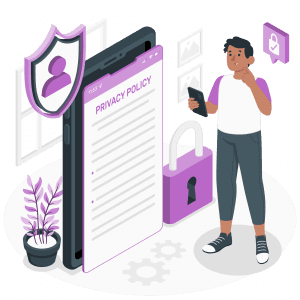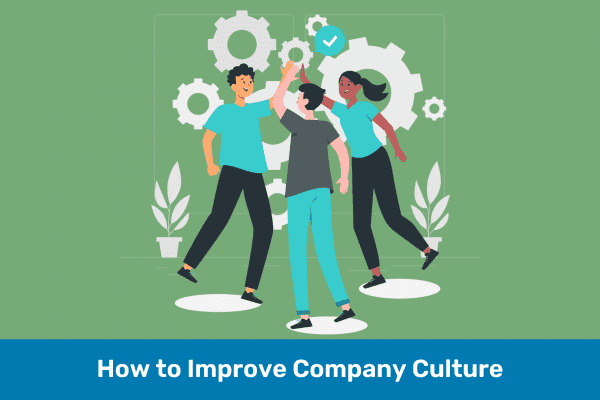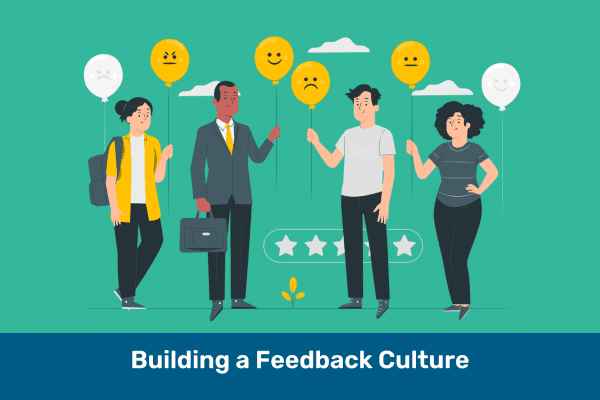Introduction
Welcome to the future of work, shaped by inclusivity. Today, fostering an inclusive culture at work is not just about meeting standards—it’s about leading with them. This blog will delve into effective strategies for creating a workplace environment where everyone is truly welcome and valued.
We’ll explore how strong leadership can ignite this change, the role of comprehensive training, and the importance of equitable hiring practices. These elements are key in crafting a workspace where everyone can thrive.
Join us as we outline practical steps to develop a vibrant, inclusive workplace. Together, we’ll uncover how these practices can transform interactions and empower teams.
Leadership Commitment

Role of Top Management in Fostering Inclusivity
The role of leadership in fostering an inclusive culture cannot be overstated. Leaders not only set the tone and expectations for organizational behavior but also influence the strategic priorities of a company. It is essential that top management visibly and consistently demonstrates their commitment to diversity and inclusion. This includes everything from public endorsements to incorporating inclusivity as a core value in business operations.
One of the compelling reasons for leadership to prioritize this can be seen in financial performance metrics. For example, a study by McKinsey & Company revealed that companies with the most ethnically and culturally diverse executive teams were 36% more likely to achieve above-average profitability. This statistic underscores the tangible benefits that an inclusive culture can deliver, reinforcing why leadership commitment isn’t just a moral imperative but a business strategy that can lead to higher financial success.
Effective leadership commitment also involves providing the necessary resources to support diversity initiatives, participating in training, and maintaining an open dialogue about inclusivity goals and achievements.
Strategies for Leadership to Demonstrate Commitment
To effectively promote an inclusive culture, leaders can adopt several proactive strategies:
-
- Visible Endorsements: Leaders should openly and consistently support diversity and inclusion initiatives. This might involve participating in and speaking at events that celebrate diversity, issuing company-wide communications that reinforce the importance of an inclusive workplace, or publicly recognizing teams and individuals who exemplify inclusive behavior.
- Training and Development: Investing in regular training programs for all employees, including anti-bias training, cultural competency workshops, and inclusivity seminars, demonstrates a serious commitment. Leadership participation in these training sessions not only sets a behavioral standard but also helps bridge the gap between different layers of the organization.
- Inclusive Policy Making: Leadership should be actively involved in developing and revising company policies to ensure they are inclusive. This involves regular reviews of existing policies, consulting diverse groups within the organization during the policy-making process, and implementing changes that remove systemic barriers to inclusivity.
- Accountability Measures: Implement mechanisms to hold all levels of management accountable for fostering an inclusive environment. This could include integrating inclusivity metrics into performance reviews, setting specific inclusivity goals for departments, and tracking progress with transparent reporting.
- Resource Allocation: Demonstrating commitment also means allocating necessary resources towards building an inclusive culture. This could be in the form of funding for diversity initiatives, support for employee resource groups (ERGs), or investments in technology that facilitates accessibility for everyone.
By integrating these strategies, leadership can effectively demonstrate their commitment to building and maintaining an inclusive culture at work. This commitment, when genuine and consistent, helps foster a workplace where every employee feels respected, valued, and empowered to contribute to the organization’s success.
Comprehensive Training Programs

Different Types of Training
To foster an inclusive culture at work, organizations must implement comprehensive training programs that cater to various aspects of inclusivity. These training programs generally fall into three categories:
-
- Awareness Training: This type of training is designed to help employees recognize the importance of diversity and inclusion within the workplace. It often includes discussions about the benefits of a diverse workforce, the challenges faced by underrepresented groups, and the various forms of unconscious bias that can affect decision-making and interpersonal interactions.
- Sensitivity Training: Sensitivity training goes a step further by helping employees understand the impact of their words and actions. It focuses on teaching employees how to interact respectfully with people from different backgrounds, cultures, and experiences. This training is crucial for creating a work environment where all employees feel safe and valued.
- Skill-Building Training: This training provides employees with practical skills needed to contribute to an inclusive environment. Examples include how to facilitate inclusive meetings, how to intervene in situations where inclusivity is compromised, and how to advocate for inclusive practices within the organization. These skills are vital for employees at all levels, enabling them to act as agents of inclusivity in their daily roles.
Impact of Training on Reducing Biases and Enhancing Team Collaboration
Comprehensive training programs play a critical role in reducing biases and enhancing team collaboration:
-
- Reducing Biases: Training, especially when it focuses on awareness and sensitivity, helps employees identify and understand their own biases, which are often unconscious. By bringing these biases to light, training programs encourage individuals to rethink and modify their behaviors and attitudes. This self-awareness is the first step toward reducing prejudicial actions and decisions in the workplace.
- Enhancing Team Collaboration: Training that includes skill-building can significantly enhance team collaboration. When team members are equipped with the tools to communicate respectfully and inclusively, they are more likely to feel comfortable sharing their ideas and perspectives. This open communication fosters a collaborative team environment where creativity and innovation can flourish. Moreover, teams that operate in an inclusive culture tend to be more resilient and adaptive to change because they harness diverse perspectives that contribute to problem-solving and decision-making processes.
Overall, comprehensive training programs are indispensable for organizations aiming to nurture an inclusive culture. They not only educate and inform but also equip employees with the necessary skills and perspectives to actively contribute to a workplace where diversity is valued and inclusion is practiced.
Transparent Recruitment and Hiring Practices

Importance of Diversity in Hiring
Diversity in hiring is critical for any organization aiming to foster an inclusive culture at work. It enriches the workplace with a wide array of perspectives, experiences, and skills, which are vital for creativity, innovation, and a broader understanding of customer needs. Diverse teams are better equipped to navigate complex, global markets and adapt to changing dynamics. Moreover, a commitment to diversity in recruitment helps attract top talent from all walks of life, enhancing the organization’s reputation as an inclusive and progressive employer.
Strategies to Ensure Unbiased Recruiting
To achieve true diversity and inclusivity in hiring, organizations must adopt transparent and unbiased recruitment practices. Some effective strategies include:
-
- Structured Interviews: Use standardized questions for all candidates to minimize personal biases and ensure fairness and objectivity.
- Diverse Hiring Panels: Form panels from different genders, ethnic backgrounds, and departments to reduce bias and enrich candidate assessments.
- Blind Recruitment Processes: Remove identifiable information from applications to focus evaluations solely on skills, experience, and qualifications.
- Inclusive Job Descriptions: Write job postings with neutral language that welcomes candidates regardless of race, gender, age, or other characteristics, focusing only on essential qualifications.
- Outreach and Engagement: Expand candidate sourcing by partnering with diverse organizations, attending varied career fairs, and utilizing social media to attract a broad range of applicants.
- Training for Recruiters: Provide ongoing training for HR and recruitment teams on diversity, inclusion, and unconscious bias to enhance support for organizational diversity goals.
By implementing these strategies, organizations can move towards more transparent, fair, and inclusive recruitment practices, which are fundamental to building an inclusive culture at work. This approach not only helps in attracting diverse talent but also lays the groundwork for a workplace environment that values and nurtures diversity at every level.
Performance Evaluation and Promotion

Addressing Potential Biases in Evaluations
Performance evaluations are crucial for career progression and development within any organization, but they can also be a hotspot for biases if not properly managed. These biases can stem from subconscious preferences, stereotypes, or cultural misconceptions, potentially leading to unfair assessments that affect morale, career growth, and ultimately, employee retention. To address these potential biases, organizations need to:
-
- Standardize Evaluation Criteria: Establish clear, measurable, and job-specific criteria that are communicated to all employees. This standardization helps ensure that evaluations are based on objective data and consistent standards rather than subjective impressions.
- Regular Bias Training: Provide ongoing training on unconscious bias to everyone involved in the evaluation process. This helps evaluators recognize and mitigate their own biases, ensuring fairer reviews.
- Multiple Evaluators: Utilize multiple evaluators to review employee performance. This approach can balance out individual biases and provide a more rounded view of an employee’s performance.
- Feedback Mechanisms: Implement open channels where employees can safely express concerns about evaluations. This not only helps in identifying potential biases but also fosters a culture of open communication and continuous improvement.
Implementing Fair Performance Metrics and Regular Audits to Ensure Equity
To maintain fairness and equity in performance evaluation and promotion, organizations should:
-
- Transparent Metrics: Clearly define and communicate the metrics used for assessing performance. Ensure these metrics are directly related to job duties and organizational goals.
- Regular Audits: Conduct regular audits of performance evaluations and promotion rates to check for patterns that might indicate bias or inequity. Look at disparities in promotions or performance scores across different demographics (e.g., gender, ethnicity) to identify areas needing attention.
- Development Opportunities: Provide equal access to training and development opportunities that can help all employees meet their performance goals and advance in their careers. This not only enhances fairness but also helps in personal and professional growth, contributing to higher job satisfaction and retention.
- Performance Improvement Plans: Offer constructive performance improvement plans that are fair and supportive rather than punitive. These plans should be tailored to individual needs and focused on helping employees succeed in their roles.
By addressing biases in performance evaluations and implementing fair, transparent metrics, organizations can ensure that promotions and career advancements are based on merit and contribute to cultivating an inclusive culture at work. Regular audits and adjustments based on audit findings further reinforce this commitment, ensuring that the performance evaluation process remains equitable and aligned with the organization’s diversity and inclusion goals.
Creating Safe Spaces for Dialogue and Feedback

Importance of Open Communication Channels
Open communication channels are foundational to creating an inclusive culture at work. They enable employees from all backgrounds and levels of an organization to voice their concerns, share their ideas, and provide feedback without fear of reprisal or judgment. Such environments foster trust and transparency, making employees feel valued and respected. Moreover, when employees believe that their voices can truly make a difference, they are more engaged, committed, and motivated to contribute to the organization’s success.
Methods to Facilitate Constructive Dialogues
Creating safe spaces for dialogue and feedback is crucial for building an inclusive culture at work. Organizations can implement several effective methods to ensure every voice is heard and valued:
-
- Regular Meetings: Conduct regular team meetings or one-on-one check-ins to foster open dialogue about workplace experiences and concerns. Structure these meetings to give each team member a chance to speak. Leaders should actively engage with the employees’ contributions, showing genuine interest in their perspectives.
- Suggestion Boxes: Set up physical or digital suggestion boxes where employees can anonymously submit their ideas or concerns. This approach is especially useful for those who might feel uncomfortable speaking in public settings. Ensure that suggestions are regularly reviewed and addressed, and communicate the outcomes or actions taken back to the staff.
- Diversity Forums: Organize forums or panels that specifically address diversity and inclusion issues. Hold these regularly, involving employees from various levels and backgrounds. Use these forums to discuss particular issues, celebrate cultural events, or educate on diversity topics, creating a dedicated space for engagement and learning.
- Open Door Policies: Maintain an open-door policy that encourages employees to approach their supervisors or HR personnel with issues as they arise. Leaders should be approachable and responsive, reassuring employees that their concerns are taken seriously and will be promptly addressed.
- Feedback Surveys: Run anonymous surveys to collect comprehensive feedback on the workplace environment, inclusivity, and employee satisfaction. Design these surveys to identify both areas of success and opportunities for improvement. Use the results to inform and shape future policies and practices.
Implementing these methods not only promotes constructive dialogues but also cultivates a culture where feedback is valued and acted upon. This proactive approach to communication is key to identifying and addressing issues before they escalate, fostering a more inclusive and harmonious workplace.
Policies and Practices

Overview of Necessary Policies
For an inclusive culture at work to truly take root, it must be supported by robust policies that explicitly promote fairness and equality. Essential policies include:
-
- Non-Discrimination Policy: This policy should clearly state that the organization does not tolerate discrimination on the basis of race, color, religion, gender, age, national origin, disability, sexual orientation, gender identity, or any other characteristic protected by law. It should outline the consequences for such behavior to deter potential offenders.
- Equal Opportunity Policy: An equal opportunity policy ensures that all employees and applicants will be treated fairly in hiring, promotion, and compensation decisions without bias. This policy supports diversity in the workplace by committing to an equitable selection process and development opportunities for all, regardless of their background.
- Harassment Prevention Policy: This policy should define what constitutes harassment and outline the steps for reporting and addressing any harassment claims. A clear stance on harassment prevention is critical for maintaining a safe and respectful workplace.
- Reasonable Accommodation Policy: Ensure that the organization provides necessary accommodations for employees with disabilities or special needs, facilitating their full participation in the workplace.
Practical Steps to Implement and Enforce These Policies Effectively
Merely having policies on paper isn’t enough; they must be actively implemented and enforced to be effective. Here are practical steps organizations can take:
-
- Comprehensive Training: Regularly train all employees, especially managers and supervisors, on these policies. Training should help them understand the legal and ethical implications of non-compliance and equip them with the skills to enforce these policies appropriately.
- Clear Communication: Policies should be communicated clearly and frequently to all employees through multiple channels such as employee handbooks, intranet sites, and staff meetings. Ensuring that every employee understands these policies is crucial for effective implementation.
- Reporting Mechanisms: Establish confidential and accessible reporting mechanisms for employees to report discrimination, harassment, or any policy violations. This could include a dedicated hotline, online portals, or a designated ombudsperson.
- Prompt Investigation Procedures: Set up a transparent process for investigating complaints that protect the confidentiality and rights of all parties involved. Ensure that these procedures are carried out promptly and impartially to maintain trust in the process.
- Regular Audits: Conduct regular audits to assess the effectiveness of these policies and practices. Audits can help identify gaps or areas of non-compliance, providing insights for necessary adjustments.
- Accountability Measures: Hold all levels of staff accountable for adhering to these policies, with clear consequences for violations. Leadership must also be accountable for ensuring these policies are a living part of the organization’s culture, not just a formality.
Implementing these steps can help solidify the foundation of an inclusive culture, where policies are not just formalities but active elements of everyday workplace interactions.
Celebrating Diversity

Encouraging Recognition of Various Cultures, Religions, and Backgrounds
Celebrating diversity in the workplace is a vital strategy for enhancing employee engagement and fostering a sense of belonging. By recognizing and valuing the diverse cultures, religions, and backgrounds of its employees, an organization not only affirms the individual identities of its workforce but also enriches the workplace environment for everyone. This acknowledgment can be manifested in various ways:
-
- Cultural Awareness Initiatives: Implement initiatives that educate and inform employees about different cultures and traditions. This could include monthly spotlights on different cultural celebrations, history months, and internal newsletters featuring stories from diverse employee backgrounds.
- Inclusive Holiday Celebrations: Expand the list of recognized holidays to include cultural and religious days significant to different employee groups. Allowing employees to share their traditions and celebrations can enhance mutual understanding and respect among coworkers.
- Diversity Panels and Guest Speakers: Host panels or invite guest speakers to discuss topics related to cultural diversity, religion, and personal backgrounds. These events can provide deeper insights into different perspectives and encourage open dialogue among employees.
Organizing Events and Activities that Celebrate Diversity
Actively celebrating diversity through organized events and activities not only makes diversity visible but also tangibly demonstrates the organization’s commitment to an inclusive culture. Here are some strategies to effectively celebrate diversity:
-
- Diversity and Inclusion Events: Organize events that highlight and celebrate the diverse makeup of your workforce. This could include international food days, cultural fairs, or art displays featuring works from artists of various backgrounds.
- Support for Employee Resource Groups (ERGs): Encourage and support the formation of ERGs that represent various demographics within the organization. Provide these groups with the resources they need to organize events and activities that promote their cultures, issues, and interests.
- Team-Building Activities: Design team-building activities that allow employees to explore diversity in a fun and engaging way. Activities could include workshops on global communication styles or storytelling sessions where employees share personal experiences.
- Participation in Community Cultural Events: Encourage and facilitate participation in external cultural events, either by sponsoring these events or providing time off for employees to attend. This shows support for the broader community’s diversity initiatives and connects the organization with its local area in meaningful ways.
By implementing these practices, an organization can build a workplace where every employee feels seen, heard, and valued. This proactive celebration of diversity can lead to a more harmonious workplace environment and a stronger, more cohesive team.
Accountability and Continuous Improvement

Setting Up Mechanisms for Accountability
For an inclusive culture at work to be effective and sustainable, it must be underpinned by strong accountability mechanisms. These mechanisms ensure that inclusivity efforts are taken seriously and that actions align with the values of the organization. Establishing accountability involves several key components:
-
- Leadership Responsibility: Leadership must be held accountable for the success of diversity and inclusion initiatives. This can be achieved by tying the performance evaluations of managers and executives to diversity metrics and inclusivity outcomes.
- Clear Objectives and Metrics: Set measurable goals for inclusivity initiatives, such as recruitment diversity targets and retention rates for underrepresented groups. These metrics should be regularly reviewed and reported to the highest levels of management.
- Regular Reporting: Implement a system of regular reporting on inclusivity metrics to the board or senior management. These reports should not only cover successes but also challenges and areas for improvement.
- Feedback Loops: Establish formal feedback mechanisms that allow employees to report on the effectiveness of diversity initiatives and suggest improvements. This could be through surveys, suggestion boxes, or regular forums.
Strategies for Ongoing Assessment and Improvement of Inclusivity Practices
To ensure continuous improvement in fostering an inclusive culture, organizations must commit to ongoing assessment and refinement of their practices. Here are some strategies to maintain and enhance inclusivity:
-
- Regular Audits: Conduct regular audits of internal processes, from hiring and promotions to day-to-day operations and team interactions. These audits help identify biases or structural impediments to inclusivity that need to be addressed.
- Inclusion Training Updates: Continuously update training programs to reflect the latest research and best practices in diversity and inclusion. As societal understanding of inclusivity evolves, so too should the training.
- Benchmarking Against Best Practices: Compare organizational practices with those of industry leaders or businesses renowned for their inclusivity. This benchmarking can provide inspiration and guidance for improvement.
- Iterative Policy Review: Regularly review and update policies to adapt to new insights or changes in the workforce demographic. Policies should evolve to remain relevant and effective in promoting inclusivity.
- Celebrating Successes: Publicly recognize and celebrate successes in achieving inclusivity goals. This not only motivates continued effort but also reinforces the organization’s commitment to diversity and inclusion.
By integrating accountability and continuous improvement strategies into their core operations, businesses can meet their current inclusivity goals. They can also adapt to future challenges and changes. This ensures that inclusivity remains a vibrant and effective part of the organizational culture.
Conclusion
In this blog, we’ve explored essential strategies for fostering an inclusive culture at work. Leadership must prioritize inclusivity and set a strong example. Comprehensive training equips employees with necessary skills and knowledge, while transparent recruitment practices ensure a diverse workplace from the start.
Fair evaluations and promotions guarantee that career advancements are merit-based and unbiased. Creating safe spaces for dialogue ensures every voice is heard. Regular policy reviews keep the organization aligned with evolving inclusivity goals, and celebrating diversity enriches the workplace.
Using tools like Woliba can enhance these efforts. Its engagement surveys and wellness resources help build a cohesive and supportive workplace. By adopting these strategies, organizations can create an environment where inclusivity thrives and every employee can succeed.
As we work to improve our workplaces, the journey toward inclusivity continues. It requires commitment, consistency, and dedication to both initiate and sustain these cultural shifts.




